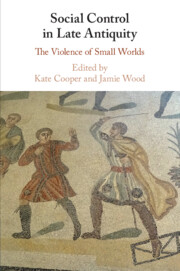77 results
Could self-reported physical performance help predict individuals at the highest risk of mortality and hospital admission events in clinical practice? Findings from the Hertfordshire Cohort Study
-
- Journal:
- Primary Health Care Research & Development / Volume 25 / 2024
- Published online by Cambridge University Press:
- 14 May 2024, e25
-
- Article
-
- You have access
- Open access
- HTML
- Export citation
Exploring the co-occurrence of depression, anxiety and insomnia symptoms, diagnoses and treatments in primary care: observational study using UK primary care data
-
- Journal:
- BJPsych Open / Volume 10 / Issue 3 / May 2024
- Published online by Cambridge University Press:
- 18 April 2024, e76
-
- Article
-
- You have access
- Open access
- HTML
- Export citation
Measuring the intangible resources caregivers need to provide nurturing care during the complementary feeding period: a scoping review in low- and lower-middle-income countries
-
- Journal:
- Public Health Nutrition / Volume 27 / Issue 1 / 2024
- Published online by Cambridge University Press:
- 15 January 2024, e78
-
- Article
-
- You have access
- Open access
- HTML
- Export citation
Psychological framework to understand interpersonal violence by forensic patients with psychosis
-
- Journal:
- The British Journal of Psychiatry / Volume 224 / Issue 2 / February 2024
- Published online by Cambridge University Press:
- 20 October 2023, pp. 47-54
- Print publication:
- February 2024
-
- Article
-
- You have access
- Open access
- HTML
- Export citation
Afterword
-
-
- Book:
- Thecla and Medieval Sainthood
- Published online:
- 06 May 2022
- Print publication:
- 26 May 2022, pp 318-328
-
- Chapter
- Export citation
Pilot evaluation of a group stabilisation intervention for refugees and asylum seekers with PTSD
-
- Journal:
- Behavioural and Cognitive Psychotherapy / Volume 50 / Issue 1 / January 2022
- Published online by Cambridge University Press:
- 21 July 2021, pp. 111-116
- Print publication:
- January 2022
-
- Article
- Export citation
Chapter 4 - A Predator and a Gentleman
- from Part I - Women and Children First
-
-
- Book:
- Social Control in Late Antiquity
- Published online:
- 18 September 2020
- Print publication:
- 01 October 2020, pp 76-102
-
- Chapter
- Export citation
Part III - Knowledge, Power, and Symbolic Violence
-
- Book:
- Social Control in Late Antiquity
- Published online:
- 18 September 2020
- Print publication:
- 01 October 2020, pp 171-274
-
- Chapter
- Export citation
Part I - Women and Children First
-
- Book:
- Social Control in Late Antiquity
- Published online:
- 18 September 2020
- Print publication:
- 01 October 2020, pp 13-102
-
- Chapter
- Export citation
Bibliography
-
- Book:
- Social Control in Late Antiquity
- Published online:
- 18 September 2020
- Print publication:
- 01 October 2020, pp 337-371
-
- Chapter
- Export citation
Introduction
-
-
- Book:
- Social Control in Late Antiquity
- Published online:
- 18 September 2020
- Print publication:
- 01 October 2020, pp 1-12
-
- Chapter
- Export citation
Index
-
- Book:
- Social Control in Late Antiquity
- Published online:
- 18 September 2020
- Print publication:
- 01 October 2020, pp 372-380
-
- Chapter
- Export citation
Copyright page
-
- Book:
- Social Control in Late Antiquity
- Published online:
- 18 September 2020
- Print publication:
- 01 October 2020, pp iv-iv
-
- Chapter
- Export citation
Preface and Acknowledgements
-
- Book:
- Social Control in Late Antiquity
- Published online:
- 18 September 2020
- Print publication:
- 01 October 2020, pp ix-x
-
- Chapter
- Export citation
Contributors
-
- Book:
- Social Control in Late Antiquity
- Published online:
- 18 September 2020
- Print publication:
- 01 October 2020, pp viii-viii
-
- Chapter
- Export citation
Part II - ‘Slaves, be subject to your masters’
-
- Book:
- Social Control in Late Antiquity
- Published online:
- 18 September 2020
- Print publication:
- 01 October 2020, pp 103-170
-
- Chapter
- Export citation
Contents
-
- Book:
- Social Control in Late Antiquity
- Published online:
- 18 September 2020
- Print publication:
- 01 October 2020, pp v-vii
-
- Chapter
- Export citation
Part IV - Vulnerability and Power
-
- Book:
- Social Control in Late Antiquity
- Published online:
- 18 September 2020
- Print publication:
- 01 October 2020, pp 275-336
-
- Chapter
- Export citation
Abbreviations
-
- Book:
- Social Control in Late Antiquity
- Published online:
- 18 September 2020
- Print publication:
- 01 October 2020, pp xi-xiv
-
- Chapter
- Export citation

Social Control in Late Antiquity
- The Violence of Small Worlds
-
- Published online:
- 18 September 2020
- Print publication:
- 01 October 2020



